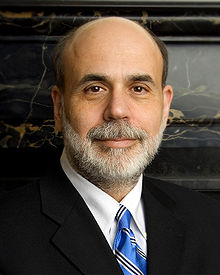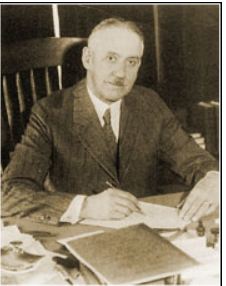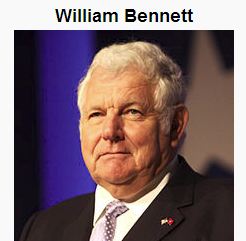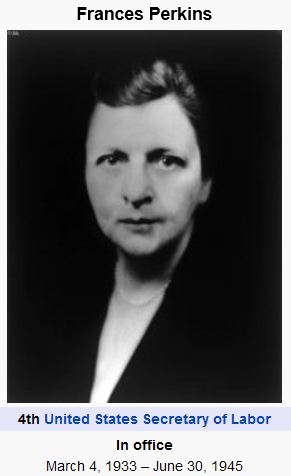Contents
- Introduction
- Preface
- Overview
- Relief Valve
-
LECTURE 1: Why We Are In The Dark About Money
- Wealth Objectives
- The Basics - Knowledge is Power
- The Wizard of Oz Story Allegory
- K12 Wealthy Decide
- Richest Two Percent Own Half World
- Cost of Inequality
- K Street Lobbys Write the Law
- Official Federal Reserve K12 Financial Literacy Curriculum by Grade Level
- What's Left Out of the Official U.S. Federal Reserve Curriculum
- EducRats
- Financial Literacy Quotes
- Lecture 1 Objectives and Discussion Questions
- LECTURE 2: The Con
- LECTURE 3: The Vatican-Central to the Origins of Money & Power
- LECTURE 4: London The Corporation Origins of Opium Drug Smuggling
- LECTURE 5: U.S. Pirates, Boston Brahmins Opium Drug Smugglers
- LECTURE 6: The Shady Origins Of The Federal Reserve
- LECTURE 7: How The Rich Protect Their Money
- LECTURE 8: How To Protect Your Money From The 1% Predators
- LECTURE 9: Final Thoughts
FINANCIAL LITERACY - WALL STREET 101
What is in the K12 Financial Literacy Curriculum
To Meet the Core State Standards
Questions every financially literate person should be able to answer
 ✔ Do you know the difference between teaching Financial Literacy skills to kids and giving them “educational” (read, marketing) materials?
✔ Do you know the difference between teaching Financial Literacy skills to kids and giving them “educational” (read, marketing) materials?
✔ Do you recognize “too good to be true” Madoff style investment pitches or what credit card and loan offers look like?
✔ Can you explain the difference between stocks and bonds?
A stock gives its holder an ownership interest in the business, while a bond makes its holder a lender to the company. The former participates in the company's upside potential, as higher earnings lead to a higher share price; the bond's owner is entitled only to a string of interest payments and only if the company defaults on those can it acquire any ownership stake (via a bankruptcy proceeding) in lieu of recouping his loan and in place of the interest income.
2016 For the Wealthiest, a Private Tax System That Saves Them Billions
The very richest are able to quietly shape tax policy that will allow them to shield billions in income.
Operating largely out of public view — in tax court, through arcane legislative provisions and in private negotiations with the Internal Revenue Service — the wealthy have used their influence to steadily whittle away at the government’s ability to tax them. The effect has been to create a kind of private tax system, catering to only several thousand Americans.
 2016 The opium farmers with the police on their side Opium poppy cultivation in Afghanistan (1994-2015)
2016 The opium farmers with the police on their side Opium poppy cultivation in Afghanistan (1994-2015)
2014 QUESTION: WHAT DOES THE IRAQ AND AFGHANISTAN COST THE AMERICAN TAX PAYER?
ANSWER: $4 TO $6 TRILLION
US population is about 315M, so $4T would be $12.7K per head, $6T would be $19K/head, assuming it were evenly spread (which it won't be).
The U.S. wars in Afghanistan and Iraq will cost taxpayers $4 trillion to $6 trillion, taking into account the medical care of wounded veterans and expensive repairs to a force depleted by more than a decade of fighting. ~ Linda J. Bilmes, a public policy professor Harvard.
U.S. still making payments to relatives of Civil War veterans: nearly 150 years after the Civil War's conclusion, the U.S. government is still paying relatives of veterans. At the 10 year anniversary of the start of the Iraq war, more than $40 billion a year are going to compensate veterans and survivors from the Spanish-American War from 1898, World War I and II, the Korean War, the Vietnam War, the two Iraq campaigns and the Afghanistan conflict. And those costs are rising rapidly. World War I, which ended 94 years ago, continues to cost taxpayers about $20 million every year. World War II? $5 billion. US Dept Clock.
2/13/14 And the Good News is the Pentagon Plans to Shrink Army to Pre-World War II Level
the public debate is being shaped by the rich
 PRIVATE INTERESTS SHAPING PUBLIC EDUCATION FINANCIAL MISEDUCATION
PRIVATE INTERESTS SHAPING PUBLIC EDUCATION FINANCIAL MISEDUCATION
See the Federal Reserve K12 Curriculum
See the 2012 Contracts from the Department of Education
Since 2002, the number of states that require students be tested on their economics coursework has dropped from 27 to 16.
In 2013 only 14 states require students to take a personal finance course in high school; 22 require a course in economics.
All this information could be integrated into Social Studies, Math, English and Geography.
5TH GRADE CURRICULUM BY YALE NATIONAL INITIATIVE
WHAT WOULD YALE WANT A FIFTH GRADER TO KNOW ABOUT THE OPIUM TRADE AND THE BOSTON BRAHMINS?
Made In China: Early American Trade with China, 1784-1844 by Mona Kolsky see PDF
This curriculum unit will examine the United States’ international trade with China from 1784-1844. Overall trade to and from the numerous ports along the east coast and the various trade routes that existed will be considered. Lessons will focus primarily on trade with China and Philadelphia. Ships sailing from the port of Philadelphia during this time period, the voyage itself, the cargo aboard the ships to and from China, and the Philadelphians that took the risk to make this international trade possible will be highlighted. I chose to focus on Philadelphia because my students live in Philadelphia and this would be of most interest to them. Secondly, I believe the specific focus of Philadelphia, as a model port city, in the examination of the China trade will be more manageable and understandable for the fifth graders whom I teach.
Mission is to Sanitize Illegal Opium Drug Smuggling History of the 1%
Yale National Initiative P.O. Box 203563 Yale Station New Haven, Connecticut 06520-3563 Phone: (203) 432-1080 Facsimile: (203) 432-1084 Electronic Mail: teachers@yale.edu
Chatham College, Pittsburgh, also conducted their own evaluations of their Teachers Institutes during the National Demonstration Project
Chatham House is a successor to the old British East India Company and serves as the think-tank and foreign intelligence arm of the British Crown. The roots of Chatham House are to be found in Britain's nineteenth-century Opium War policy.
Bones and U.S. Education
The connections that Bonesman George Miller had with high finance and high politics through Bonesman William Walter Phelps (S&B, 1860) helped 'steer' U.S. Education to take root in a German-Prussian vein as well. W. W. Phelps was son-in-law and estate trustee of John Sheffield, benefactor of Sheffield Scientific School (SSS), founded in 1854 as Yale Scientific School and renamed in 1861 after Joseph E. Sheffield.
In the history of American education, SSS at Yale University was the origin of the "science departments" within the Calvinist religious origin of Yale, and furthermore is cited as a seed altering European classical educational institutions toward German empirical, experimental, and materialist sciences education and liberal arts. SSS as a different model of education for the United States really expanded because of Skull and Bones memberships channelling a thirty year monopoly of all of Connecticut's Land-Grant College Act funds into SSS from 1862-1892, while other Connecticut institutions were denied funding. It helped that Bonesman Augustus Brandegee (S&B, 1849) was speaker of the Connecticut State Legislature in 1861 when the state bill to accept the federal land grant script was aired and aimed at Bones-connected SSS exclusively afterwards. (His son, Bonesman Frank Bosworth Brandegee (S&B, 1885), like his Bonesman father, was another high Connecticut politican. He committed suicide. His appointed replacement was another Yalie Hiram Bingham III who had two Bonesmen in his family.[4]) No other educational institution in Connecticut was allowed Land Grand College Act funds until 1893. SSS was absorbed by Yale in the 1950s; the SSS trust still controls its "Yale" land however.

[Schools should be factories] "in which raw products, children, are to be shaped and formed into finished products...manufactured like nails, and the specifications for manufacturing will come from government and industry." - Elwood Cubberly, Dean of Education at Stanford (1905)
The Golden Rule: Whoever has the gold makes the rules
"The trick is to stop thinking it is `your' money. -- IRS auditor"
"Incomprehensible jargon is the hallmark of a profession." -- Kingman Brewster (1919-1988), diplomat and president of Yale University.
“A man is rich in proportion to the time he can devote to other things than money” - Henry David Thoreau
"A risk to society of “an entrenched plutocracy,” caustic critic H.L Mencken wrote:
"The plutocracy, in a democratic state, tends to take the place of the missing aristocracy, and even to be mistaken for it. It is, of course, something quite different. It lacks all the essential character of a true aristocracy: a clean tradition, culture, public spirit, honesty, courage– above all, courage. It stands under no bond of obligation to the state; it has no public duty; it is transient and lacks a goal… Its main character is its incurable timorousness; it is forever grasping at straws held out by demagogues… its dreams are of banshees, hobgloblins, bugaboos.”

The barbarians are inside the gates using clever labeling like "Standards and Accountability; Common Core Standards," and spent untold millions through PACS to shape the public conversation and perception on TV, Radio, Papers PTA's which has gone a long way toward getting the ignorant public to buy what they're selling.
It is clear that the EducRATS' shaping of this public conversations has influenced a generation of young adults.
According to the 2007 Schwab Teens and Money Fact sheet survey , "nearly 9 in 10 say they want to learn how to make their money grow (89 percent)". pdf
"Two-thirds (65 percent) believe learning about money management is 'interesting,' and 60 percent say that learning about money management is one of their top priorities." Charles Schwab study reveals that teenagers in the United States have huge expectations about the type of wealth that they will build as young adults. Of the 1,000 teenagers that participated in the survey, boys on average expected to be earning $173,000 a year while girls expected to be earning $114,200 annually. The reality is, however, that only 5% of all wage-earning adults in the U.S. earn six figure salaries. Barely a third of them admitted to knowing how to budget money (41%), how to pay bills (34%), and how credit card interest and fees work (26%).
Despite most teens lacking in this knowledge, they do not realize this is not the knowledge they need to build wealth. It is the knowledge they need to perhaps assume a baseline of fiscal responsibility as young adults. However, this is hardly the knowledge that will help them assert their wealth-building muscles.

The DOE wants educators to enhance their ability to incorporate financial literacy in the new [CCSS] Common Core State Standards
[CEE] COUNCIL FOR ECONOMIC EDUCATION FOR OVER 50 YEARS.
Richard Cordray, director of the Consumer Financial Protection Bureau (CFPB), Richard G. Ketchum, chairman and CEO of the Financial Industry Regulatory Authority, Inc. (FINRA) and Jeffrey M. Lacker, president of the Federal Reserve Bank of Richmond: they want all "teachers banked"; it is called Human Capital Investment and meets the CCSS financial education requirement. CEE’s programs reach more than 55,000 teachers and approximately 5 million students.
Daniel N. Hebert Daniel.Hebert@Jumpstart.org was Vice President of Consumer Lending for St. Mary’s Bank and is now northeastern director of Jump$tart Coalition (703) 472-2625 for Personal Financial Literacy. This is paid for by Experian and Wells Fargo Foundation. It is also designed to get K12 teachers and students banked.
financial literacy being taught as if there is an even playing field
IMAGINE IN THE BEGINNING OF K12 PUBLIC EDUCATION
Where a poor, deaf, patient widow sits
And awes some thirty urchins as she knits;
Infants of humble, busy wives, who pay
Some trifling price for freedom for the day.
At this good matron's hut the children meet,
Who thus becomes the mother of the street;
Her room is small, they cannot widely stray;
Her threshold high, they cannot run away;
With band of yarn she keeps offenders in,
And to her gown the sturdiest rogues can pin.
UNEQUAL INVESTMENT IN AMERICA'S CHILDREN
It is the greatest irony that children are supposed to be taught about financial management as if they are all on an even financial playing field. There is nothing further from the truth.
2012 School funding disparities persist, analysis shows
UNEVEN DISTRIBUTION OF WEALTH IN AMERICA CONTINUES TO GET WORSE
The unequal investment in America's children reflects the growing disparity in wealth among American citizens. As the EducRATS attempt to bring supposed financial literacy to young American adults, they have been investing their efforts in increasing income inequality so they get to make and keep more money. So financial literacy is nothing more than a marketing gimmick or a scam to distract from the truth of what is actually happening.
15 Facts About America's Income Inequality
Remember it's about class warfare. it's about US vs.THEM, not Red vs. Blue which is only a side show. The rich are getting richer at a pace that leaves everyone behind. And in the long run, that threatens our democracy.
You might not know it, with all the progress we've made as a society in the past 100 years (our first black president, for instance), America is still an incredibly unequal place. The gaps between classes, sexes, and races are--in many ways--actually getting worse, and the gap between the rich and the poor is larger than at any time in the last 75 years.
According to the latest reliable figures (done in 2008 and including capital gains), having a little over $1 million ($1.14 million, to be exact) in annual income would locate you in the top 1% of all American families. And having an income of $3.24 million per year would qualify you as part of the richest one-tenth of 1% of all U.S. families.
Charlotte Iserbyt - Deliberate Dumbing Down of the World
http://www.deliberatedumbingdown.com
Charlotte Iserbyt served as Senior Policy Adviser in the Office of Educational Research and Improvement (OERI), U.S. Department of Education, during the first Reagan Administration, where she first blew the whistle on a major technology initiative which would control curriculum in America's classrooms.
"Freedom is never more than one generation away from extinction. We didn't pass it to our children in the bloodstream. It must be fought for, protected, and handed on for them to do the same, or one day we will spend our sunset years telling our children and our children's children what it was once like in the United States where men were free." ~Ronald Reagan, 40th president of U.S.
Charlotte Iserbyt: Societies Secrets
Antony C. Sutton - An Introduction to the Order of Skull & Bones
Antony Cyril Sutton (February 14, 1925 - June 17, 2002) was a British-born economist, historian, and writer. He studied at the universities of London, Goettingen and California and received his D.Sc. degree from University of Southampton, England. He was an economics professor at California State University Los Angeles and a research fellow at Stanford University's Hoover Institution from 1968 to 1973. During his time at the Hoover Institute, he wrote the major study Western Technology and Soviet Economic Development (in three volumes), detailing how the West played a major role in developing Soviet Union from its very beginnings up until the present time (1970). In 1973 he published a popularized, condensed version of the three volumes called National Suicide: Military Aid to the Soviet Union, and was thereby forced out of the Hoover Institution.
Boston Brahmins
Gore Vidal Explains The Ruling Class and Feeder Schools and Networks for the Rich
